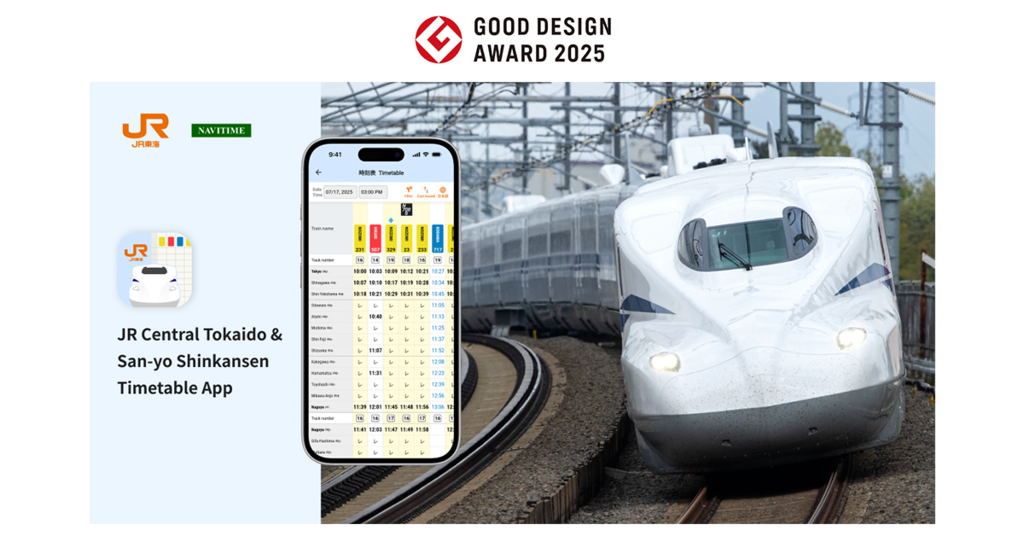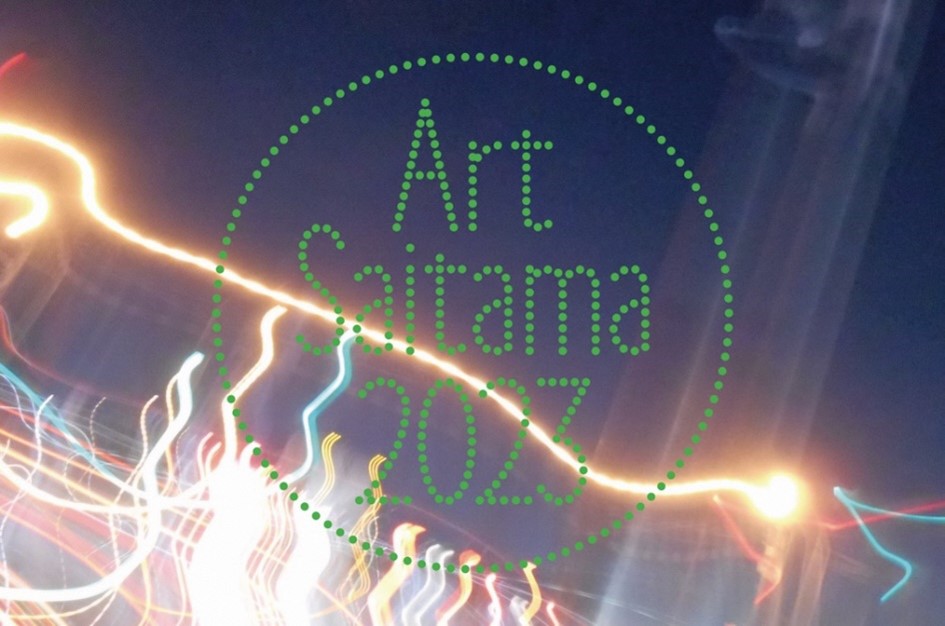The Saitama Triennale Executive Committee presents the Saitama Triennale 2023 from October 7 (Sat) until December 10 (Sun), 2023.
The general theme of this time’s festival is “We.” The idea behind this is to make the art festival an opportunity for looking at the world, along with its various problems – climate change, social disparity and division, etc. – once again in a new glance.
Under the direction of the Contemporary art team目 [mé], a diverse array of artists from Japan and abroad participate in a number of events at the main venue (the Former Omiya Civic Hall). At the festival that revolves all around the keyword “We,” various artists come together and show works that represent their respective unique views.
One of the main visuals that are used to symbolize the festival at large, is a work by the photographer SHIRATORI Kenji. The images that he captures through the medium of his own body and his white cane, inspire us directly to ask ourselves what exactly it means to “see.”
Other visuals used for illustrating the festival were made by the members of 目 [mé] or other creators, unfolding in a number of different patterns to represent the festival’s multifaceted nature.
During the festival, the Former Omiya Civic Hall that serves as main venue, may only be entered with a valid ticket. For detailed information on types of tickets and how to purchase one, please visit the Saitama Triennale website.
In addition to the main venue, events also take place at cultural facilities and in the streets all across Saitama City, including related programs in the form of Civic Projects and Cooperative Projects.
Saitama Triennale 2023 Four keywords

A chain of activities
For the duration of the Festival directed by 目 [mé], the main venue (the Former Omiya Civic Hall) will change its appearance day by day. Staged in the Large Hall are performances of live music and performing arts, as well as film screenings and various other programs. Even on days with no performances, visitors will have opportunities to witness creators during preparations and rehearsals. In addition, photographic, sculptural or installation works are shown in the exhibition rooms, including daily changing displays. A number of “Civic Projects” around individual curators are also carried out during and even before the Festival, as well as several “Cooperative Projects” that take place at various locations in cooperation with the diverse artistic and cultural resources of Saitama City. For the duration of the Festival, the whole of Saitama will be a “chain of activities.”

SCAPERS
Created in this project are countless sceneries that blur the line between things that are staged and those that aren’t, such as, for example, the appearance of a landscape painter who looks just like one would imagine him, or fallen leaves so beautifully arranged that it seems to be calculated. Every day, SCAPERS continue to emerge in and around the main venue, and at various other places across Saitama City, according to plots worked out by the members of 目 [mé] and a number of other creators including stage directors and researchers. Not even the SCAPERS themselves know what the others are up to, and where and how they will strike. No-one knows who and where they are, and their position is ultimately defined by the audience’s reactions. The ambiguous nature of the SCAPERS will definitely enhance the personal quality of each visitor’s experience of the festival.

Saitama
The general theme and plan behind this time’s Triennale is closely connected also to the fact that the members of 目 [mé] have been based in Saitama for many years. Right next to a metropolis where forward seems to be the only direction, without denying the sort of unawareness that they feel, they capture that certain “quality” that lies in it. However, when it comes to expressing it in concrete terms, it turns out to be so vague and fleeting that it is difficult to grasp. The programs in this festival were put together with the aim to capture that particular sensation that certainly exists in this place.

“Seeing” anew
A “chain of activities” where a lot of things happen all at once, with SCAPERS that visitors are entrusted to identify, and all of this wrapped up in the flavor that is “Saitama.” It all continues to move and change for the entire duration of the festival. Rather than offering similar experiences at similar venues, the idea was to send visitors astray in the streets where they might as well miss some program or other, but end up in places and situations that will be their own personal experiences. It’s a transition from “site-based” to “time-based”: When, where, with whom and under what circumstances those experiences are made; how the weather was on that day, where you got off the train, what route you walked. Or what scenery just somehow caught your attention. The very act of walking around is what defines the experience of this festival, and ultimately, it is an act that is tantamount to “seeing the streets and world once again in a new glance.” The festival aims to provide a stage for that.
Artists featured at the main venue
Under the direction of the Contemporary art team目 [mé], a wide variety of artists from Japan and abroad appear at the festival’s main venue. Staged in the Large Hall are performances of live music and new pieces in the realm of performing arts, as well as film screenings, performances by civic cultural organizations, and various other programs. Some of them also invite visitors to watch them during preparations and rehearsals. Furthermore, a diverse array of works by artists, photographers, editors, bonsai masters and other specialists, are shown in the main venue’s exhibition rooms, including displays that change day by day.

Must-see: Virtuosos in performance and rehearsal
Opening act is the father of minimal music, Terry RILEY, and the festival will close with a live set by the multi-instrumentalist Jim O’ROURKE. Visitors can also catch both during (parts of) rehearsals.
The main venue’s Large Hall transforms into a cinema
The program includes screenings of a genre-crossing selection of six films and three short animations, all of which represent in their own way the festival’s general theme, “we.” Film screenings generally open with the short film OUR CINEMAS (directed by ODA Kaori).
Programs at the Large Hall
For some performances staged at the Large Hall, advance reservation is required.
– For more details, please see the Event Schedule on the Triennale website.
Saitama Triennale 2023, Direction

Photo: ABE Takeshi
Contemporary art team 目 [mé]
Japanese contemporary art team project with three core members: artist KOJIN Haruka, director MINAMIGAWA Kenji, and “installer” MASUI Hirofumi. 目[mé] works on the realization of artworks that manipulate perceptions of the physical world. Their installations provoke awareness of the inherent unreliability and uncertainty in the world around us.
Main Venue

The Former Omiya Civic Hall, which serves as main venue for this festival, was completed in 1970. For a half century until its closure in March 2022, the theater was widely popular among citizens as a stage for “special occasions.” The doors that remained shut since the hall’s closure, open once again for the 65 days of the Triennale. Under the direction of 目 [mé], the daily programs at the main venue feature diverse lineups of creators, including contemporary artists, researchers, editors, stage directors and bonsai master who present a variety of works in exhibitions and performances. Some of them can also be observed preparing or rehearsing for their performances, while exhibitions include displays that continue to change on a daily basis. Constantly moving and transforming, the main venue will present itself in a different light each time you enter it.
– Location: 3-47-8 Shimocho, Omiya-ku, Saitama City, Saitama
– Access: 15 min walk from Saitama-Shintoshin or Omiya railway stations
– Hours: 10:00-18:00 (Sun, Tue-Thu) / 10:00-20:00 (Fri, Sat)
Closed: Monday (open Monday and closed the following day if Monday is a national holiday)
– Please note that no parking space is available at the main venue. We recommend using public transport.
Main Venue Ticket Information
Tickets are required for exhibitions at the main venue, and performances at the Large Hall.
Next to 1-Day Tickets, a Festival Pass is available that (among other benefits) enables holders to reenter the main venue for an unlimited number of times during the festival period.
1-Day Ticket General¥2,000 / Saitama Citizens¥1,500
Festival Pass General¥5,000 / Saitama Citizens¥3,500
– 1-Day Ticket: Valid for the main venue on the day of visit only (free re-enter)
– Festival Pass: Valid for the person named on the ticket only. Holders may enter the main venue at any time during the festival period.
– Admission is free for high school students and below, and for holders of a disability certificate plus one accompanying person.
How to purchase tickets
Tickets are available via the official Ticket Sales Site, and at ticket counters at the main venue. For more information, please visit the official website.
– Day tickets available October 7 (Sat) – December 10 (Sun)
– 1-Day Tickets and Festival Passes are valid for the main venue (Former Omiya Civic Hall) only. Please note that separate tickets may be required for events at other venues.
– Tickets may not be refunded or reissued.
Event outline
Saitama Triennale is an art festival that is held once every three years in Saitama City. Since the first installment in 2016, the Triennale has been taking place with a lineup of artists from Japan and abroad, with the aim to boost cultural activities in the region, and thereby enhance the appeal of Saitama as a city of art and culture. An art festival that is open for anyone to “join in and make things together,” the Triennale takes place all across Saitama City as an occasion that encourages exchange among citizens, between citizens and artists, and between artists and the region at large.
– Event name: Saitama Triennale 2023
– Event period: Saturday, October 7 – Sunday, December 10, 2023
– Venues:
Main venue: Former Omiya Civic Hall
15-minute walk from Saitama-Shintoshin Station / Approx. 15-minute walk from Omiya Station
In addition to the main venue, related projects take place at various cultural facilities and other locations in the streets of Saitama City.
– Opening hours: 10:00-18:00 (Sun, Tue-Thu) / 10:00-20:00 (Fri, Sat)
Last entry 30 minutes before closing.
– Closed: Monday (Open Monday and closed the next day when Monday is a national holiday)
– Organizer: Saitama Triennale Executive Committee
Saitama Triennale 2023
– Event period: Saturday, October 7 – Sunday, December 10, 2023
– Theme: “We”
– Venues: Main venue: Former Omiya Civic Hall
In addition to the main venue, related projects take place at various cultural facilities and other locations in the streets of Saitama City.
– Website https://artsaitama.jp/
– Facebook https://www.facebook.com/artsaitama.skg/
-Twitter https://twitter.com/art_saitama/
– Instagram https://www.instagram.com/artsaitama/
– Inquiries
Secretariat of Saitama Triennale Executive Committee
(Saitama City Cultural Promotion Foundation, International Arts Festival Promotion Division)
Address: 1-7-1 Negishi, Minami-ku, Saitama City 336-0024.
TEL: 048-767-5411 (Tue-Sat, 9:00-12:00 / 13:00-17:00)
Fax: 048-767-5351
E-mail:arts-festival@saitama-culture.jp
Persons in charge: Inoue, Akahoshi
※Main Photo: SHIRATORI Kenji









